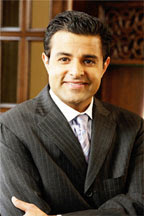Liposuction is a slimming technique that suctions deposits of unwanted fat from different portions of the body. Several types of Liposuction are available, using different techniques like lasers or ultrasounds to melt the fat and make the procedure easier, while causing minimal skin damage. However, all techniques employ a hollow tube called a cannula and a suctioning device.
There are numerous advantages to Liposuction. In Liposuction, fat removal is performed by preparing the surfaces and suctioning the fat with a cannula. High amounts of fat may be removed with traditional Liposuction and lower amounts with the newer Liposuction techniques. With Liposuction, there is no need for exercise, diet or other more complicated slimming techniques to eliminate fat. However, after the procedure, patients need to watch their diets and exercise to maintain the results of Liposuction. At Liposuction Specialist Beverly Hills centers, some procedures may be performed as an outpatient treatment. The results of Liposuction will be visible immediately after the swelling is gone and will improve for the following six months after the procedure. Some Liposuction procedures also have a skin tightening effect. The results can be durable, provided overeating is avoided and an active lifestyle is maintained. Liposuction procedures can be applied on various areas of the body including thighs, hips, buttocks, abdomen, upper arms, back, cheeks, chin and neck.
The ideal candidate for Liposuction has a stable weight that is within 30% of their ideal body weight. Good skin tone and elasticity is required for the procedure. The risk of complications increase for patients that smoke, have a family history of blood clots, diabetes, heart disease, lung disease or liver disease. Liposuction surgeons in Beverly Hills are board certified by the American Society of Plastic Surgeons. As such, they operate in an accredited medical facility and have the necessary training and experience to safely perform Liposuction.
During a Liposuction surgery, patients are given anesthesia before a small incision is made. The Liposuction Specialist then inserts a hollow tube into the incision and pushes it forward and pulls it back repeatedly to scrape the fat. As the fat is removed from the surrounding tissue, it is sucked out through a vacuum attached to the tube.







